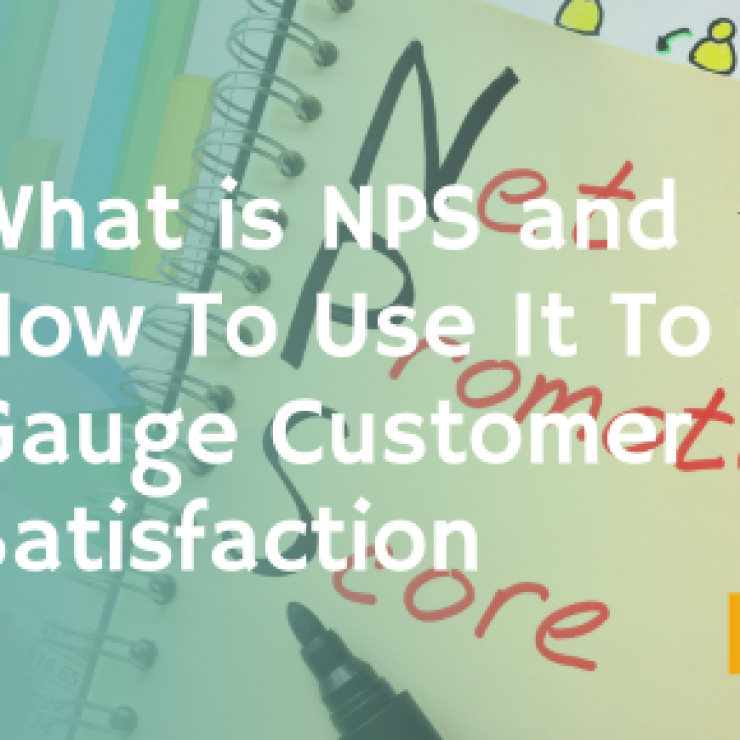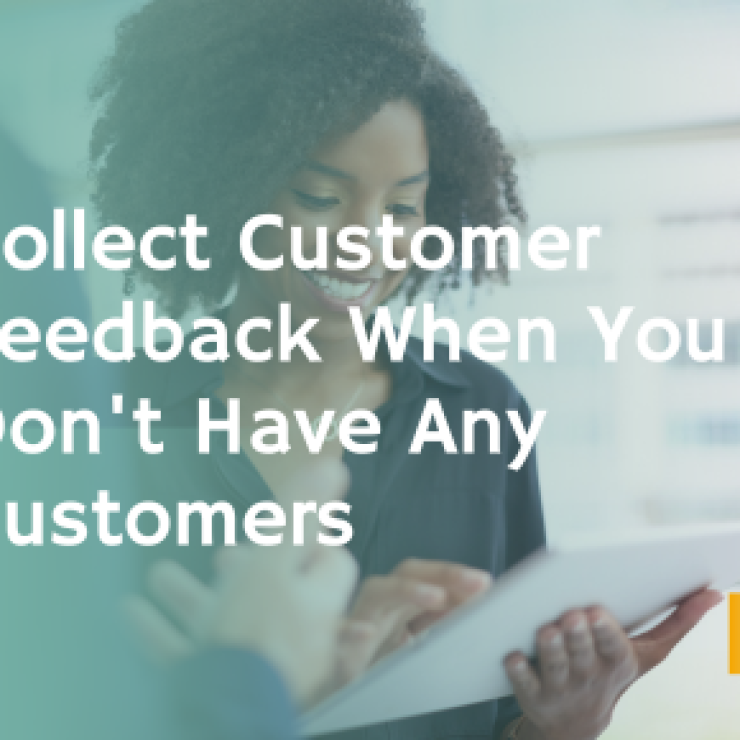Collecting customer feedback isn’t just a mere business formality. It’s an essential process that fuels business growth and enhances the overall customer experience.
By implementing various methods for collecting customer feedback, a company can turn insightful data into actionable plans that can boost their market performance.
This blog aims to uncover the significance of customer feedback, explore ten effective methods for its collection, and help you choose the best one for your business needs.
The Importance of Customer Feedback
In a business environment marked by cut-throat competition, merely selling your product or service isn’t enough. The game-changer lies in how you create and maintain a compelling customer experience.
Let’s delve into why collecting customer feedback is the backbone of this process.
A. Role of Customer Feedback in Business Growth
Collecting customer feedback plays a pivotal role in propelling your business forward. It allows you to identify what’s working well and what areas require improvement.
By acting upon the feedback, you can enhance your product or service, optimize your marketing strategies, and ultimately, boost your sales and increase your market share.
In short, customer feedback is an invaluable asset that helps you understand your customers better and steer your business towards growth.
B. Impact of Customer Feedback on Product or Service Development
The second crucial aspect of collecting customer feedback is its impact on product or service development. Your customers are the end-users of your offerings.
Hence, their inputs can provide you with unique insights into their needs, preferences, and pain points. Collecting customer feedback can aid in refining existing products or services and inspire new ones that align with your customers’ desires.
It can also help you eliminate any features or aspects that don’t add value, saving resources and improving your offerings.
C. Customer Feedback as a Tool for Customer Retention and Loyalty
Lastly, collecting customer feedback can be a powerful tool for customer retention and fostering loyalty. When customers feel heard and valued, they are more likely to stick with your brand and become repeat customers.
Besides, addressing their feedback can result in improved customer satisfaction, which can turn your customers into brand advocates, spreading positive word-of-mouth about your business.
As you can see, collecting customer feedback is not an option; it’s a necessity. It fuels your business growth, aids in product or service development, and builds customer loyalty.
In the following sections, we’ll explore the various methods to effectively collect this feedback, starting from surveys to customer suggestion boxes, and more.
10 Methods of Collecting Customer Feedback
Method #1: Surveys
Surveys are one of the most common and effective methods for collecting customer feedback. They allow businesses to gather information on a large scale and understand common trends and patterns.

A. Explanation of Surveys
Customer feedback surveys are sets of questions given to customers to gather their opinions about the company’s products, services, or experiences.
They can be conducted online, via email, or through physical forms, and can be targeted to specific customer segments based on various factors like their purchase history, demographics, etc.
B. How to Design an Effective Survey
Designing an effective survey is crucial in collecting accurate and useful customer feedback. A well-constructed survey should be concise, easy to understand, and designed to collect both quantitative (e.g., rating scales) and qualitative feedback (e.g., open-ended questions).
It’s essential to ask the right questions that provide actionable insights. Including a mix of close-ended and open-ended questions can help gather comprehensive feedback.
C. Benefits and Drawbacks of Using Surveys
The main benefits of using surveys include their wide reach, the ease of distribution, and their ability to provide large amounts of quantitative data.
They can be anonymized, which may make customers more willing to provide honest feedback. However, surveys also have drawbacks.
They may have a low response rate if they’re too long or poorly designed, and the data collected may not provide as in-depth insights as some other methods.
Method #2: Feedback Boxes
Feedback boxes offer an open channel for customers to share their thoughts and experiences. They can be physical boxes in brick-and-mortar stores or digital ones on websites.

A. Description of Feedback Boxes
Feedback boxes are open-ended channels that allow customers to provide unsolicited feedback on their terms. They can express their thoughts, concerns, or ideas without any guiding questions, leading to raw and unfiltered feedback.
B. Effective Strategies for Using Feedback Boxes
To effectively use feedback boxes, businesses must place them in noticeable areas (like near checkout counters in physical stores or on the homepage for online platforms).
They should invite customers to share their opinions and assure them that their voices matter. Digitally, they should be easy to find and use, without requiring too many steps or personal information.
C. Pros and Cons of Feedback Boxes
Feedback boxes offer unfiltered and spontaneous feedback, which can provide unique insights. They give customers the freedom to express their opinions fully, potentially uncovering issues not revealed by structured feedback collection methods.
However, they might generate a lot of feedback that’s not immediately actionable or useful, as it’s not directed at specific aspects. Additionally, maintaining anonymity can be more challenging with physical feedback boxes.
Method #3: User Testing
User testing, also known as usability testing, is a hands-on method of collecting customer feedback that involves observing customers as they interact with your product or service.

A. Definition and Importance of User Testing
User testing involves having real users interact with your product or service while observing and recording their actions, reactions, and perceptions.
This provides invaluable insights into how customers use your product or service, what difficulties they encounter, and how their experience can be improved.
B. Steps to Conduct User Testing
User testing involves selecting a group of users that represent your target customer base, setting tasks related to your product or service for them to complete, observing them as they perform these tasks, and then analyzing the results.
It’s crucial to prepare carefully for user testing, clearly define what you want to learn, and analyze the results objectively.
C. Advantages and Disadvantages of User Testing
User testing offers in-depth insight into the customer’s experience. It uncovers usability issues that may not surface through other feedback collection methods.
However, it can be time-consuming and expensive to conduct, especially if you need to test a broad audience or multiple variations of your product or service.
Method #4: Social Media Listening
In the digital age, social media listening or social media monitoring has become an essential tool for collecting customer feedback.
A. Explanation of Social Media Listening
Social media listening involves monitoring your brand’s social media channels for customer feedback, direct mentions of your brand, discussions regarding specific keywords or topics, competitor analysis, and general insights into customer behavior.
B. Techniques for Effective Social Media Listening
To effectively utilize social media listening, businesses must monitor not just their own social channels but also other public forums and social platforms.
They need to use social listening tools to streamline the process and analyze the data collected. Regular reporting and timely action on insights gained are crucial for effective social media listening.
C. Pros and Cons of Social Media Listening
Social media listening provides real-time feedback and broad coverage as it encompasses multiple platforms. It enables you to identify trends quickly and respond promptly to positive or negative feedback.
However, it may be challenging to sift through the high volume of data, and important insights may get lost if not handled correctly.
Method #5: Email and Contact Forms
Email and contact forms provide an effective method of collecting customer feedback that balances the flexibility of open-ended responses with the structure of a survey.
A. Understanding Email and Contact Forms for Feedback
Emails and contact forms typically contain a mix of rating scales, multiple-choice questions, and open-ended questions.
They offer customers the opportunity to provide feedback at their convenience. Emails can be sent out post-purchase or at regular intervals, while contact forms can be made available on your website.
B. Best Practices for Using Email and Contact Forms
The key to effective feedback collection through these methods is simplicity and relevance. The form or email should be easy to fill out, with a clear indication of its purpose.
Ask specific questions and consider using conditional formatting to personalize the form based on the customer’s responses.
C. Benefits and Drawbacks of Using Email and Contact Forms
Emails and contact forms are convenient for the customer and the business. They provide structured, yet detailed feedback.
However, they can suffer from low response rates, especially if they are long or if the customer sees no direct benefit from completing them.
Method #6: Review Websites
Review websites are platforms where consumers share their experiences, ratings, and reviews of products and services. They are an excellent source of unfiltered, honest customer feedback.
A. Role of Review Websites in Collecting Customer Feedback
Review websites such as Yelp, TripAdvisor, or even Google reviews can provide businesses with direct feedback on their products or services.
Monitoring these platforms helps businesses understand their customers’ experiences and identify areas of improvement.
B. How to Manage and Respond to Reviews
It’s essential to manage your presence on these platforms actively. Responding to reviews, both positive and negative, shows customers that you value their feedback.
Constructive responses to negative reviews can turn a negative situation into a positive customer experience.
C. Advantages and Disadvantages of Review Websites
Review websites can provide businesses with in-depth and honest feedback. However, they are open to the public, and negative reviews can potentially harm your business’s reputation.
Method #7: Focus Groups
Focus groups are a classic market research tool. They involve gathering a group of individuals and facilitating a discussion around your products or services.
A. Overview of Focus Groups
A focus group typically involves 6-10 participants who are a part of your target demographic. They engage in a structured discussion about your products or services, guided by a moderator.
This provides deep insight into customer perceptions, preferences, and experiences.
B. How to Conduct a Successful Focus Group
To conduct a successful focus group, you need to carefully select participants that represent your target audience, plan a guided discussion that keeps the conversation focused yet open to exploring new ideas, and skillfully moderate the discussion to ensure everyone’s voices are heard.
C. Pros and Cons of Using Focus Groups
Focus groups provide qualitative data and can unveil insights that would be difficult to capture through other methods. They allow for interaction between participants, which can lead to a deeper exploration of topics.
However, they can be time-consuming, expensive, and the data collected may be challenging to analyze due to its subjective nature.
Method #8: Customer Interviews
Customer interviews involve one-on-one conversations with customers to gain detailed insights into their experiences, motivations, and satisfaction.
A. Importance and Explanation of Customer Interviews
Customer interviews can be conducted in-person, over the phone, or through video calls. They provide an opportunity to dive deep into individual customer experiences, understand their motivations, and uncover opportunities for improvement that surveys or other broad-scale methods might miss.
B. Tips for Conducting Impactful Customer Interviews
Successful customer interviews involve careful planning. It’s important to prepare a set of questions, but also to let the conversation flow naturally.
Being respectful of the customer’s time and showing genuine interest in their feedback can encourage more honest and comprehensive responses.
C. Advantages and Disadvantages of Customer Interviews
Customer interviews provide rich, detailed data and can help build stronger customer relationships. However, they are time-consuming and may not be feasible for a large customer base.
The data collected is also qualitative, which can be more difficult to analyze and interpret.
Method #9: Net Promoter Score (NPS)
Net Promoter Score (NPS) is a quantitative method of collecting customer feedback that focuses on measuring customer loyalty.

A. Understanding Net Promoter Score
Net Promoter Score is a customer loyalty metric calculated by asking customers a single question: “On a scale from 0 to 10, how likely are you to recommend our company/product/service to a friend or colleague?”
Based on their response, customers are categorized as Detractors (0-6), Passives (7-8), or Promoters (9-10). The NPS is calculated by subtracting the percentage of Detractors from the percentage of Promoters.
B. Implementing NPS in Your Feedback Strategy
Implementing NPS involves deciding when and how to ask the NPS question. This could be post-purchase, at the end of an interaction with customer service, or at regular intervals.
It’s crucial to follow-up with an open-ended question asking for the reason behind the score to gain more detailed insights.
C. Advantages and Disadvantages of NPS
NPS is straightforward and easy to implement. It provides a clear measure of customer loyalty and allows for benchmarking against industry standards.
However, it oversimplifies customer feedback and doesn’t provide detailed insights into the customer experience.
Method #10: Customer Suggestion Boxes
Customer suggestion boxes, be it physical or digital, provide customers with an open-ended format to express their ideas, feedback, and complaints.
A. Role of Customer Suggestion Boxes in Feedback Collection
Customer suggestion boxes encourage customers to provide feedback or share ideas on their own terms. They can be placed in a physical location, like a store, or integrated into a website or mobile application.
B. Strategies to Maximize Use of Customer Suggestion Boxes
To maximize the use of customer suggestion boxes, ensure they are easily visible and accessible. Encourage customers to use them by regularly reviewing and acknowledging the feedback received.
C. Pros and Cons of Customer Suggestion Boxes
Customer suggestion boxes can provide unexpected insights and innovative ideas from customers. They provide an outlet for customers to express their thoughts and feel heard.
However, the feedback received can be difficult to quantify, and essential issues might get lost if the volume of feedback is high.
Choosing the Right Method(s) for Your Business
Selecting the most suitable customer feedback collection method for your business is a crucial step. This choice should be guided by a thorough understanding of your business, your customers, and the specific insights you seek.
A. Factors to Consider When Choosing a Feedback Collection Method
The choice of a feedback collection method should consider several factors. This includes the nature of your business, the size and demographics of your customer base, the kind of data you need (qualitative, quantitative, or both), and the resources available for analysis.
For example, if you have a younger customer base, digital methods like social media listening might be more effective. On the other hand, for complex products or services, methods like user testing or customer interviews might be more appropriate to get detailed feedback.
B. Balancing Different Methods for Comprehensive Feedback
No single method can capture all aspects of the customer experience. Therefore, it’s crucial to use a mix of methods to gather comprehensive feedback.
For instance, surveys or NPS can provide quantitative data on overall customer satisfaction or loyalty, while methods like user testing, interviews, or focus groups can provide qualitative insights into specific issues or improvements.
C. Adapting Methods Based on Business Needs and Customer Preferences
The feedback collection methods should be flexible and adapt to your evolving business needs and customer preferences. Regularly reviewing and updating your feedback collection strategies ensures they continue to provide valuable, actionable insights.
Conclusion
Collecting customer feedback is not a one-time activity but a continuous process that should be integral to your business strategy. The feedback collected serves as a vital tool for understanding your customers’ needs, expectations, and experiences.
It helps in identifying areas of improvement, innovating, and enhancing your product or service offerings, and ultimately, in fostering customer satisfaction and loyalty. The methods discussed in this blog offer a variety of ways to listen to your customers.
The key is to choose and balance the methods that best suit your business needs and ensure your customers feel valued and heard. Remember, every piece of customer feedback, whether positive or negative, is an opportunity to learn and grow.




